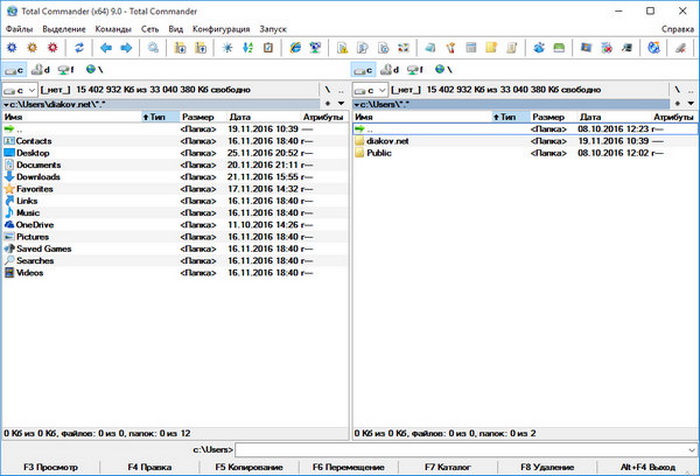Total Commander Podarok 653

0.6 2019-01-27 0.6. Download Total Commander 8.52a Podarok Edition + Lite () or any other file from Applications category. HTTP download also available at fast speeds.
Rural Issues Edited by Susana Helm and Cecile Lardon The Rural IG column highlights the work of community psychologist and colleagues in their rural environments. We welcome your submissions and inquiries! With any submission, we will provide timely feedback in the form of track changes and comment bubbles on your word document, so that a series of revisions is possible. We aim for submissions of about 1200 words, with about 10 APA style references. Photographs (jpegs) and other graphics enhance articles, which are now published in the online version of TCP in color!
Please send submissions to Susana (). This is a great opportunity for students to share their preliminary thesis or dissertation work, or insights gained in rural community internships. Klyuch dlya programmi shef ekspert 1. For this issue we have two brief reports. The first Brief Report is a student co-authored example from Erika Jang, an undergraduate majoring in Family Relations, in the College of Tropical Agriculture and Human Resources at the University of Hawai`i. Erika is completing her junior year internship (one semester) in our Rural Health Initiatives program. She will be contacting Rural Interest Group members via email in the upcoming 2-3 months to inquire about your rural community psychology activities, and will be asking if you would like to contribute to this column.
Erika participated in a SAMHSA webinar recently, which prompted our brief report below. The second brief report is from Professor Pamela Mulder of Marshall University in West Virginia where she has served as the senior editor of the Journal of Rural Community Psychology. She is passing the baton to a new editor, Associate Professor Keelon Hinton, also of Marshall University. On behalf of the Rural Interest Group – welcome aboard Keelon and a big mahalo (thank you) to Pam! As JRCP moves forward, please consider volunteering to serve as a reviewer and to fill vacancies on the Editorial Board of the journal. Brief Report: Rural Mental Health – a Focus on Rural Veterans and Service Members Written by Hee Yun Erika Jang and Susana Helm The President’s New Freedom Commission on Mental Health delineates six overarching goals for achieving a transformed mental health system (President’s New Freedom Commission on Mental Health, 2003; see Table 1).
Of particular interest in Rural Community Psychology is the third goal to eliminate mental health disparities. Recommendations 3.1 & 3.2 focus on improving access to culturally competent quality care in rural and geographically remote areas. President’s New Freedom Commission on Mental Health Goals Goal Focus & Recommendations 1 Americans Understand that Mental Health Is Essential to Overall Health 2 Mental Health Care Is Consumer and Family Driven 3 Disparities in Mental Health Services Are Eliminated 3.1 Improve access to quality care that is culturally competent. 3.2 Improve access to quality care in rural and geographically remote areas. 4 Early Mental Health Screening, Assessment, and Referral to Services Are Common Practice 5 Excellent Mental Health Care Is Delivered and Research Is Accelerated 6 Technology Is Used to Access Mental Health Care and Information Prevalence Rates. While prevalence rates vary greatly based on how data were measured and collected, it is important to compare prevalence rates when discussing health disparities.

Table 2 summarizes selected publicly available rates. For the purpose of this brief report, depression and PTSD among adults is the focus, with specific attention paid to veterans and service members. Currently, approximately 22 million veterans live in the US, and among them 28-36% live in rural areas (Office of Rural Health, n.d.; VHA Office of Rural Health, 2013). In the general US population, rates of depression have been estimated to range from 5-8% for major depression (Duckworth, 2009), and 5-15% for generalized depression (CDC, n.d.). Among the rural population, prevalence of depression has been estimated at 6%, which was statistically higher than the urban population in the same study (Probst, et al. Approximately 10-20% of veterans are diagnosed with depressive symptoms (Heady & Bair, 2014). Rates of PTSD in the general population have been estimated to range from 7-8% (Gradus, n.d.; National Center for PTSD, n.d.).
However, among adults living in rural areas as many as 38% may be diagnosed with PTSD (Onoye, et al. Among veterans and service members, 9-30% have been diagnosed with PTSD (Onoye, et al., 2013, National Center for PTSD, n.d.). Depression and PTSD Prevalence Rates Diagnosis US Population Rural Population Veteran & Service Member Population Depression 5-15% 6% 10-20% PTSD 7-8% 38% 9-30% Mental Health Disparity among Rural Service Members. PTSD among rural veterans has been reported separately, corresponding to wars and international conflicts; 30% of Vietnam veterans, 10% of Gulf veterans, and 11-20% of Afghan and Iraq veterans (Kinney, 2012). Aoc-hrr 2nd edition test online. Considering the tremendous improvements in body armor and combat medicine since World War II, the survival of military personnel today is generally close to 90% (Kinney, 2012). It is expected, and has been apparent, that this will result in a high demand of mental health services to provide for an exponentially increased amount of Afghan and Iraq veterans who may require treatment. A recent webinar hosted by SAMHSA's Technical Assistance Center reviewed the topic of, “Strategies for Improving Rural Behavioral Health Services for Service Members, Veterans, and their Families” (Heady & Bair, 2014).